It was a crisp, cool autumn afternoon in Fairbanks, Alaska. Larry was an experienced auto technician, but today he was feeling the pressure. A 2008 Toyota Tacoma had been on his rack for three days now. The truck had come into the shop Monday morning with a loud growling noise from the rear axle area.
Larry had easily diagnosed the failed wheel bearings. The repair, however, hadn’t been so easy. Larry didn’t have the rear axle bearing press adaptor, which makes this job much easier. Pressing the old bearings off and the new ones back on took a lot of extra time, and the job had dragged into Wednesday. The owner was anxious to begin his drive back to his hometown, and then, just when the job was nearly complete, disaster! Larry had installed the left bearing on the right axle than the right bearing on the left axle.
Avoiding Extra Work is the Mother of Invention
The bearings looked identical, except for the speed sensor mounting holes. Completely re-doing the wheel bearing job was the last thing Larry wanted to do. He came up with a plan: swap the sensors side to side so they would fit in the mounting holes.
The truck was quiet on a road test and there were no warning lights. The job was complete, and the customer was free to resume his road trip. Larry breathed a sigh of relief knowing he had dodged a bullet today. Unfortunately, he did not realize it wasn’t a bullet he dodged, but a boomerang.
It Didn’t Work
This truck showed up in my bay around 3000 miles later. The owner was one of our regular clients and he now had an ABS light displayed. The light had turned on shortly after he had the wheel bearings replaced while on a road trip to Alaska. He didn’t have time to return to the shop where the work was performed, however.
Our shop was tasked with validating the previous repairs and diagnosing the root cause. I began by verifying the ABS light was illuminated and by performing a full scan of all modules present on the vehicle. There were two fault codes stored in the ABS controller, a signal fault for each of the rear wheel speed sensors.
My next step after reading the fault codes was to visually inspect the speed sensors wiring at the rear wheels. Everything looked fine at the rear axles. The connecters were plugged in and tight and there was no visible rubbing or damage to the wiring harnesses.
The visual inspection was followed by a road test while graphing the wheel speed sensor data on a scan tool. Graphing the signals makes it very easy to spot a speed sensor that is different from the other wheels or has a signal that is dropping out. Much to my surprise, all the speed sensor signals were identical, with no dropouts or speed variations.
I initially had suspicions about the repairs that were done shortly before the ABS light turned on. After the visual inspection and the road test turned up no issues, I was beginning to rethink those suspicions. I decided to clear the fault codes and head out on another road test. My uncertainty grew further when the speed sensor faults did not return and the ABS light stayed off.
Customer Information – A Valuable Tool
Then I remembered the owner of the vehicle had said that the ABS light did not come on until he was driving on the freeway. So, I took the truck out again and this time I got on the freeway. Sure enough, as soon as I got up to freeway speeds the ABS light turned on and both speed sensor faults set. Customer descriptions are valuable tools when diagnosing intermittent faults.
I cleared the faults and drove the vehicle on the freeway again. It’s important to make an effort to establish cause and effect as much as is possible. I ran this test several more times and both faults would set every time the vehicle speed exceeded 60 mph. At this point, I was beginning to feel a little like Michael J Fox in Back to the Future. I couldn’t help but wonder what would happen if I hit 88 mph in this truck. Luckily, local speed limits kept me in the here and now.
Toyota Information System to the Rescue
Reviewing the DTC Detecting Conditions from Toyota service information shed some light on the situation. The code table showed that both the C0210 and C0215 faults can be caused by a reverse rotation signal for 1 second or more at 62 mph or more!
The Toyota Techstream Scanner Makes Life Easier With Freeze-Frame Data
The first real breakthrough clue came when I hooked up the Techstream, the official Toyota scan tool. The Techstream is a laptop-based scan tool that is quite intuitive and easy to navigate. It showed the same two-speed sensor faults of course, but it also offered up additional information in the form of ABS freeze-frame data that the aftermarket scan tool didn’t. The presence of freeze-frame data is indicated by the small snowflake to the left of the fault code.
The freeze-frame data that was saved at the time the code set showed the front wheels traveling in a forward direction and the rear wheels traveling in reverse. The freeze-frame also showed that the vehicle was traveling 62 mph when the data was saved. This matched the DTC Detecting Conditions for the wheel speed sensor faults found in Toyota’s Service Information.
Pause and Reflect
At this point in the diagnosis, I paused to reflect on what was known and unknown so far. I have found this technique to be quite useful while troubleshooting, as it helps prevent heading down the wrong testing path and prevents important clues from being missed or overlooked.
What I knew so far was that ABS light would only turn on at or above 62 mph, and the codes were set because the ABS controller believed the rear wheels were traveling in reverse. What I didn’t know was why the ABS controller thought the rear wheels were moving backward when the front wheels were going forward, or how the system could differentiate the direction of travel for each wheel.
It was time to head back into Toyota’s Service Information. My questions were soon answered after reading through the ABS operating principles. The wheel speed sensors on this truck were of the magnetoresistive type. Magnetoresistive or MR sensors operate differently from variable reluctance sensors. A variable reluctance sensor produces an AC signal on its own, while MR sensors require a reference voltage to operate. They produce a digital square wave and provide more accurate signals, especially at slower speeds.
The MR sensors on this Tacoma are two-wire sensors. One wire provides a reference voltage to the sensor and the second wire is for the output signal. A magnetic encoder ring is embedded in each rear wheel bearing which passes by the speed sensor as the axle rotates. The circuitry in these MR sensors generates a square wave between 0.7V and 1.4V when the car is moving forward. When the car is reversing, there are 2.6V peaks that allow the ABS ECU to recognize the truck is going backward.
Now it was time to test the speed sensor signals on the truck. I connected the Picoscope to both rear wheel speed sensor wires at the ABS controller, which was easily accessible underhood. With the rear wheels elevated off the ground and the ignition turned on, I captured both rear-wheel speed sensor signals.
This truck doesn’t have a limited-slip differential so by spinning one of the wheels in a forward direction the opposite wheel would spin backward. The scope capture clearly showed both voltage signals the MR sensors can produce.
In the capture, Channel A (in blue) shows the signal produced when the wheel was rotated in a forward direction, and Channel B (in red) showed the signal when the wheel was spinning backward. The only problem was that the wheels were actually spinning in the opposite direction!
Diagnosis Complete!
I now had all the data I needed, and all of my questions answered. The ABS faults were setting because the rear wheel bearings were installed on the incorrect sides of the vehicle. This caused the wheel speed sensor signals to show the rear wheels were rotating in reverse when they were moving forward.
I presented all my findings to the service manager who estimated wheel bearing replacement for the owner. The owner was going to contact the shop in Alaska that performed the original repairs, but he approved the work in the meantime.
I installed the new wheel bearings, this time on the correct sides of the truck. I cleared codes and then took another drive on the freeway to verify I had corrected the customer concern. This time the ABS light stayed off when the truck reached 62 mph.
When I was inspecting the old bearings, I did uncover another interesting bit of this story. One of the bearings had a small hole drilled in the side across from the speed sensor mounting hole. The previous technician had begun drilling a new mounting hole for the speed sensor before deciding he could just switch the sensors side to side. He was unaware of the issues he created by switching the speeds sensors though.
Making a Mistake Doesn’t Make You a Bad Person
I must give credit to the shop in Alaska that performed the original wheel bearing replacement incorrectly. They stepped up and reimbursed the owner of the vehicle for the cost of the diagnostics and repairs we performed.
This truck demonstrated the importance of slowing down long enough to double-check part numbers to see if there are left and right sides to the parts being installed and to thoroughly read the factory service information. This truck also showed the importance of owning our mistakes and taking the necessary steps to correct them. Vehicles are becoming less and less forgiving of improper repairs. We need to continually improve our processes and hold ourselves to a higher level of excellence to meet the demands of our trade.


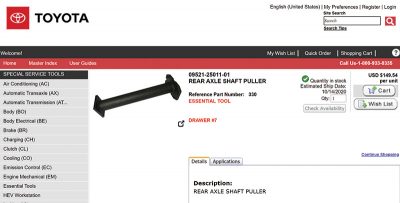


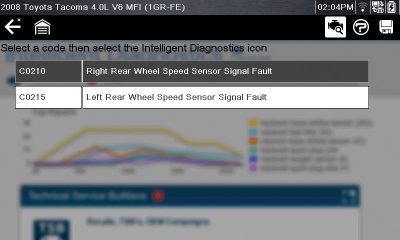


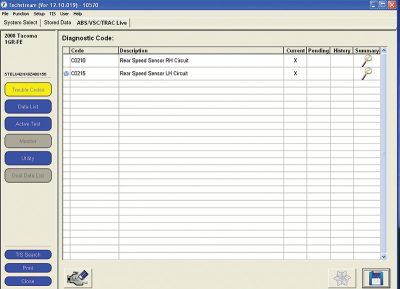
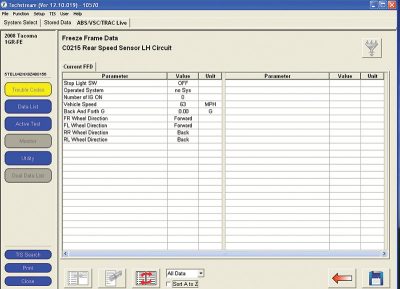
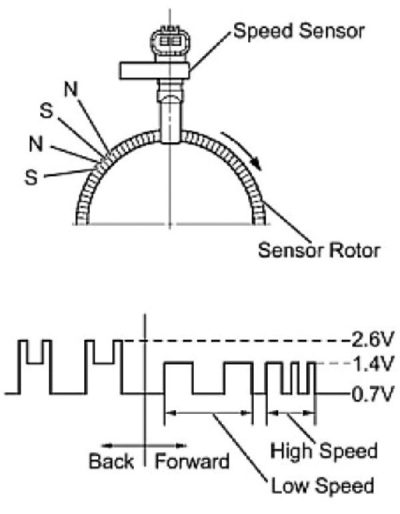
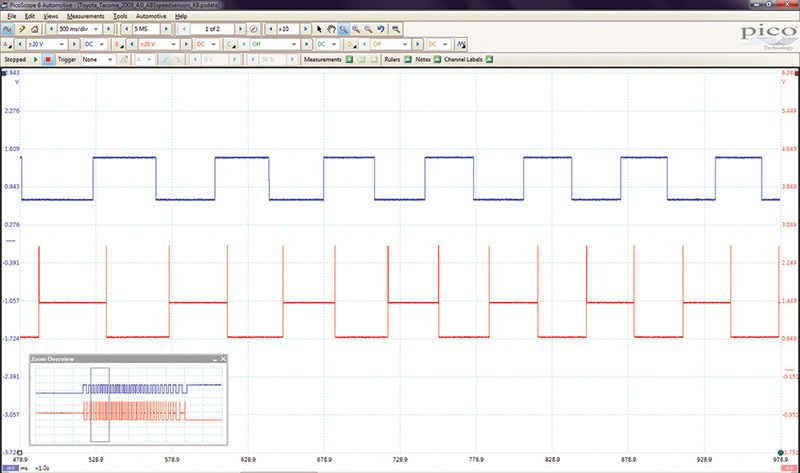
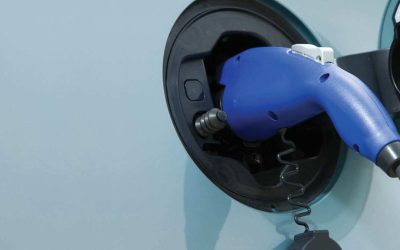
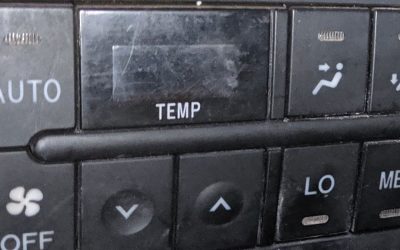
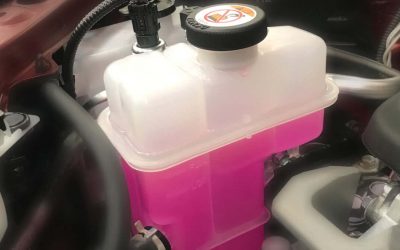
0 Comments